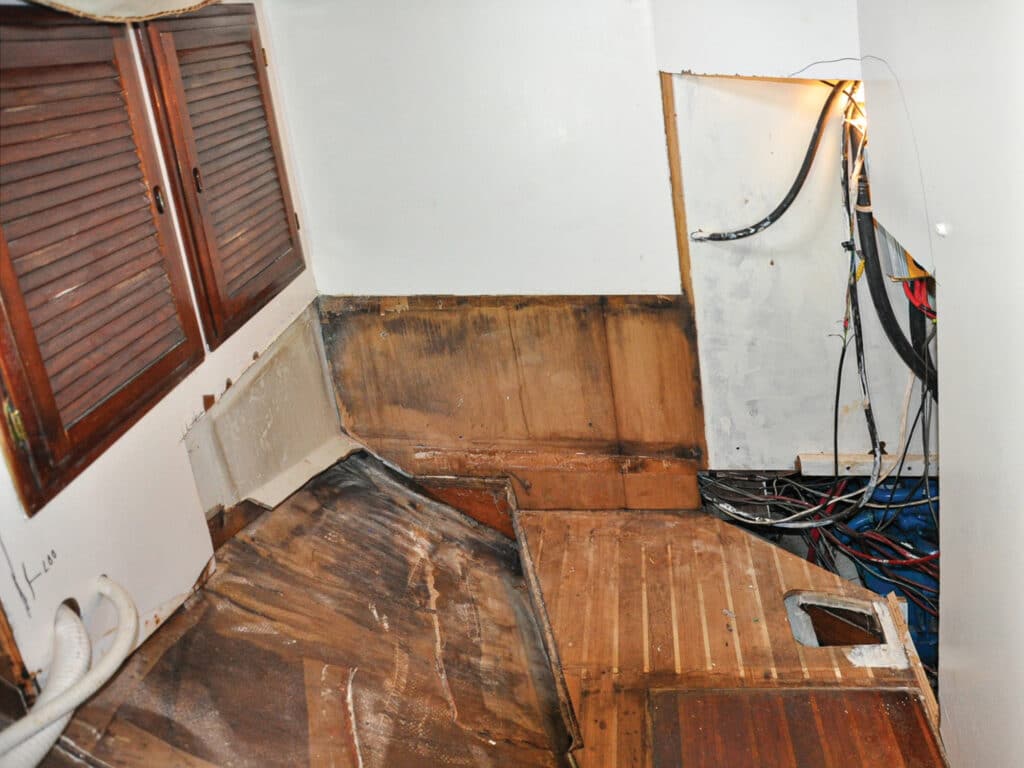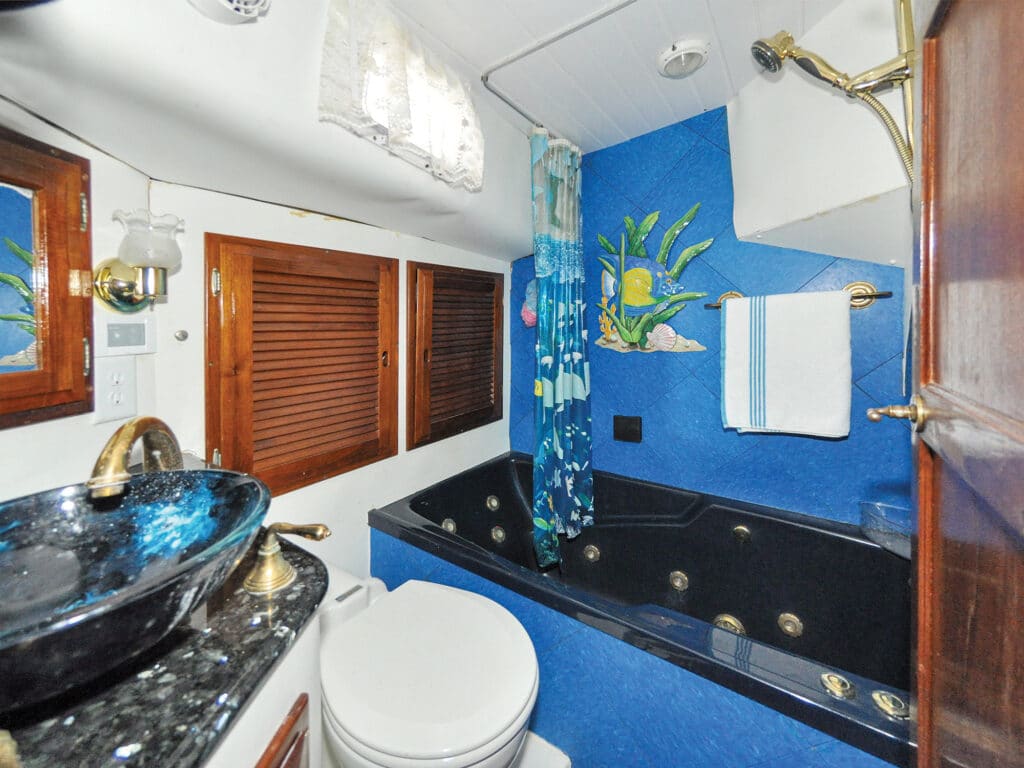
In 2011, I began searching for a specific type of ketch. I flew from Florida to Mexico, to Seattle and the British Virgin Islands, all to inspect boats. My budget was around $180,000, but I was unable to find a vessel to my liking—unless it was a project boat that would require a lot of repair and TLC.
I’m far from alone. No matter what the ideal boat is in any sailor’s mind, it’s always a quick descent from the dream back to reality, which usually includes asking yourself whether you should buy a less-expensive fixer-upper or a more-expensive (and allegedly) turnkey edition. Experienced boat owners tell first-time buyers to take a hard look at their own skill levels and personal circumstances when trying to decide. Many first-time buyers fail to listen, at which point the descent continues from reality into nightmare.
Part of the problem, I think, is that a laundry list of factors comes into play when deciding which type of boat to buy. Precious few buyers ever think about them all. You need to consider your aptitude for and attitude toward do-it-yourself projects, your available tools, your age and health, and the age and condition of the vessel—not to mention your expectations and personal circumstances.
With all of that in mind, here are smart ways to think about the possibilities and pitfalls that might confront you, whether you go the fixer-upper or turnkey route.
Major Considerations
If your budget is limited, then a project boat—a neglected vessel that needs a lot of work—might be the best way to acquire a particular model. For a person who is capable of doing the work, the project boat can become a nice boat that is more valuable.
Be aware that newcomers often look at project boats through rose-colored glasses. They inaccurately assess the costs of a restoration. A good rule is to estimate at least double for costs and time. Those who ignore that rule often end up selling the boat before finishing the repairs. The vessel then transfers to another enthusiastic buyer. (By comparison, a skilled project-boat restorer can flip a boat and even make a profit.)
Project boats come in all shapes and sizes, and they’re not necessarily older boats. Some models hold their value; some older designs were built stronger than some newer vessels. Sometimes, their owners had financial problems, or became ill or elderly. And, once that owner decided to sell the boat, maintenance probably declined, leading to deterioration. Boats like these can be found in marinas everywhere. They’re like abandoned puppies, begging for a new owner to take care of them.
The age of a boat, along with the age of the buyer, can also matter. A younger buyer might have plenty of time to restore a project boat, while an older person might opt for a ready-to-go boat that can be enjoyed immediately. In some cases, older buyers who are retired have more time to work on boat projects. The project-boat option can be particularly appealing if the boat can be used during the restoration so that some pleasure can be had as work progresses.
A warning: A project boat can become a white elephant if the cost of restoration ends up exceeding the cost of a ready-to-go boat.
On the other side of the coin, a ready-to-go boat might be ideal for a buyer with the right budget and a desire to get out on the water immediately. A ready-to-go boat is also smart for a buyer who lacks the skills and/or time for repairs. It’s true that a ready-to-go boat will likely have faults, but it’s usually to a lesser degree than with a project boat.
And then, there are your personal circumstances. Spouses want input. They notice big expenditures. A single person might not have any constraints, but a married buyer with children could have many—and should probably consider a ready-to-go boat that the family can enjoy straightaway, even if it stretches the initial budget.
An inspection by a professional marine surveyor is a sound investment for any buyer of a used boat, and is normally required for insurance purposes anyway. A good surveyor can estimate the cost of restoration—either DIY or at a boatyard—and can help a buyer learn more about the boat’s true condition. After receiving the survey, you can honestly assess your abilities and limitations in terms of time and finances. And remember: Surveyors are far from infallible. There will probably be things they miss too.
Elbow Grease
First-time boat buyers often overestimate their DIY abilities. For a project boat, the necessary skills might include repairing or replacing complicated electrical equipment, plumbing, carpentry, hydraulics, sails and lines, and the many branches of these top-level skills. Sure, you can learn from books and the internet, but even with the knowledge of how to do something, you need skill to actually do it.
Especially taxing on an old project boat can be electrical repairs because there might not be any wiring diagrams, and the wires will likely be brittle, with insulation cracked or chafed. The complete wiring system might need replacing, a task that is tedious and expensive. Even an experienced person sometimes has to call in a specialist, especially if certain instruments or gauges are needed, such as in air-conditioning-systems diagnosis. And it can be hard to know where to buy materials at the right price for some projects.
Repairs also typically require lots of tools, especially for carpentry work. I recently repaired a damaged toe rail on my schooner. The job required shaping and splicing in a 6-foot-long teak plank that was 7 inches wide and an inch thick. I needed a bench circular saw, an electric hand sander, a bench sander, a jig saw, an oscillating sander, a bench, a hand router, a power planer, a power drill, four clamps and four chisels, not to mention numerous screws, glues, caulk and varnish. If you must buy or rent some or all of these tools, your costs will go up. Fast.
Forging Ahead
In my own boat search, I got a professional survey and bought a project boat for less than a quarter of my budget. As I began working on the boat, I discovered things that even the surveyor had overlooked. For the first two years, most of my time was spent repairing or replacing broken items.

I’ve messed about with boats for more than 50 years, and I have above-average restoration skills, along with lots of tools. I was also newly retired at the time, so I could work on the boat using leftover funds from my budget. And I have a wife who enjoys sailing and varnishing. I was an ideal candidate to buy a project boat.
Some of the alterations I made could stymie many a boat buyer. I changed the rig to a schooner by moving the masts and standing rigging. I installed a square sail on the foremast, then converted all the sails to roller furling, operated from the safety of the cockpit. All three staterooms were remodeled, and a full-size bath was installed in the owner’s head. The galley was modernized to include a deep freezer, a washer/dryer and a microwave. I installed two electric toilets with waste-treatment systems. I fitted two air-conditioning units, and upgraded all the plumbing and instrumentation. These alterations, along with many more innovations, are detailed on Britannia’s website, schooner-britannia.com.
The cost over the years has been nearly $100,000, but even after adding that to the initial purchase price, I’ve still paid less than my original budget. And I have a boat exactly to my liking.

Of course, my labor has been free, but I’ve mainly enjoyed the project, along with extensively sailing the boat along the way. I suppose you could say that a buyer like me can also factor in the cost of the enjoyment.
Hailing from New Bern, North Carolina, Roger Hughes has been a professional captain, charterer, restorer, sailing instructor and imbiber. He recently completed a full restoration and extensive modification of a well-aged 50-foot ketch. Read more at schooner-britannia.com.








